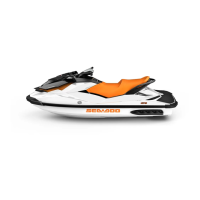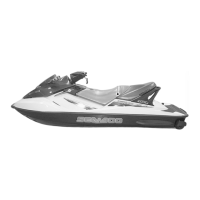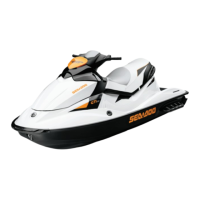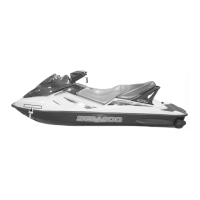SPECIAL SAFETY MESSAGES
– Approachapersoninthewaterfrom
the lee side (opposite the direction
of the wind). Turn off the motor be-
fore coming close to the person.
– Participate in water sports only
in safe areas. Stay away from
other boats, channels, beaches,
restricted areas, swimmers, and
heavily traveled waterways and un-
derwater obstructions.
– Turn off the engine and anchor the
watercraft before swimming.
– Swim only in areas designated as
safe for swimming. These are usu-
ally marked with a swim area buoy.
Do not swim alone or at night.
F00A2LY
SWIM AREA BUOY
– Do not water ski between sunset
andsunrise. Itisillegalinmostar-
eas.
– Do not drive the watercraft directly
behind a water skier, tuber or wake-
boarder. At 40 km/h (25 MPH) per
hour, the watercraft will overtake a
person who falls in the water 60 m
(197 ft) in front of your waterc
raft in
about 5 seconds.
– Shut off the engine and remove the
tether cord from the engine cut-off
switch when anyone is in the
water
nearby.
– Stay at least 45 m (148 ft) away
from areas marked by a diver down
float.
Avoid personal injury! Do not allow
anyone near the propu
lsion system or
intake grate, even when the engine
is off. Items such as long hair, loose
clothing or person
al flotation device
straps can become entangled in mov-
ing parts resulting in serious injury or
drowning. In shallow water, shells,
sand, pebbles or other objects could
be drawn up by the jet pump and be
thrown rearward.
F00A2MY
DIVER DOWN FLOAT
For more information on approved, le-
gal and safe practice of water sports,
please contact the local legal authority
on water sports safety for the area you
plan to practice in.
Hypothermia
Hypothermia, the loss of body heat
resulting in a subnormal body temper-
ature, is a significant cause of death in
boating accidents. After an individual
has succumbed to hypothermia, he or
she will lose consciousness and then
drown.
PFDs can increase survival time be-
cause of the insulation they provide.
Naturally, the warmer the water, the
less insulation one will require. When
operating in cold water (below 4°C
(40°F)) consideration should be gi
ven
to using a coat or jacket style PFD as
they cover more body area than the
vest style PFDs.
14
_______
SAFETY I
NFORMATION
________
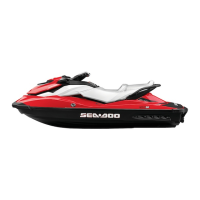
